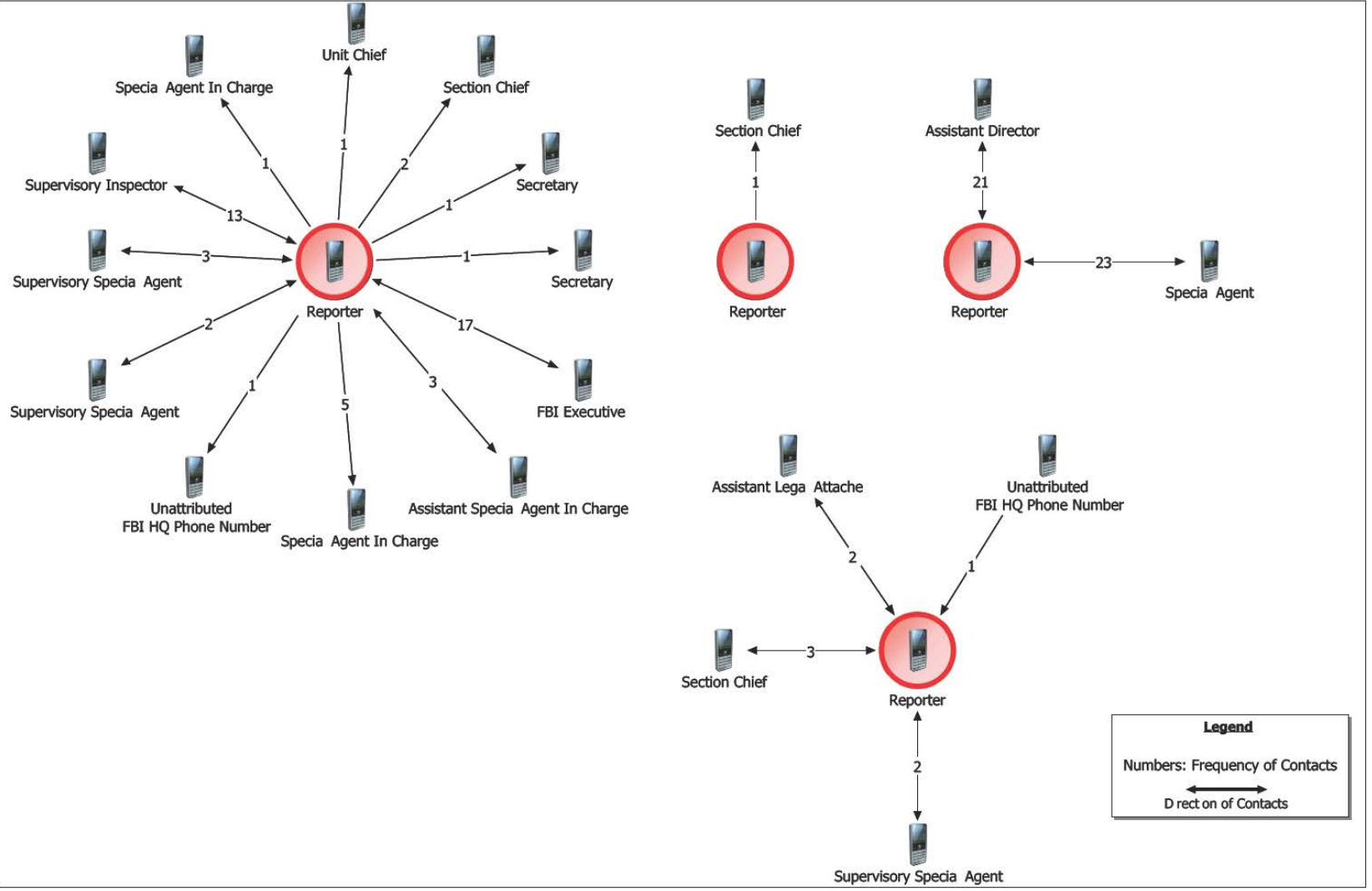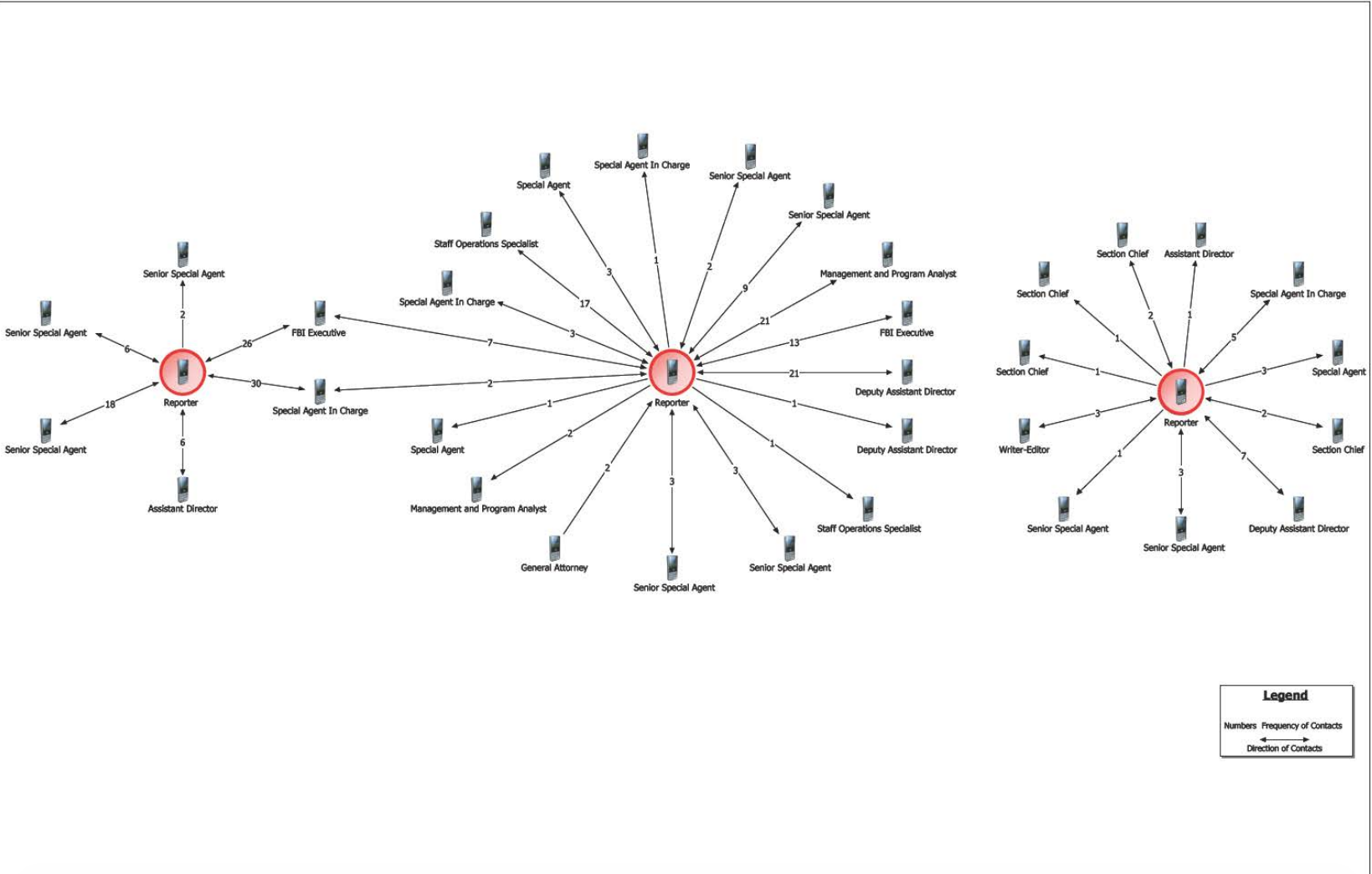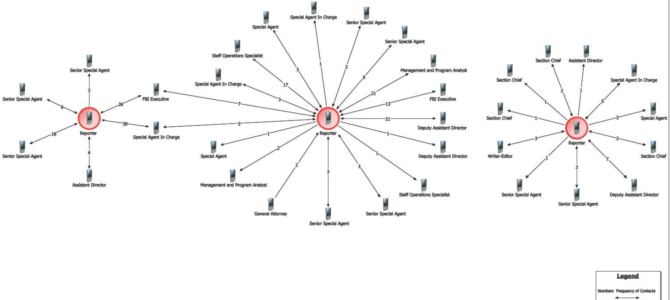The Department of Justice inspector general report released today includes two elaborate charts mapping the volume of communications identified between FBI employees and members of the media in April, May, and October 2016.
“We have profound concerns about the volume and extent of unauthorized media contacts by FBI personnel that we have uncovered during our review,” the report states.
Here’s “Attachment H” in the IG report.


The issue of FBI employees improperly disclosing non-public information, a.k.a. leaking tips to reporters, “raised considerable concerns,” according to investigators. They discovered a number of social interactions with reporters deemed inconsistent with FBI policy and department ethics rules.
“FBI employees received tickets to sporting events from journalists, went on golfing outings with media representatives, were treated to drinks and meals after work by reporters, and were the guests of journalists at nonpublic social events,” the report states.
Despite being able to track the number of times agents communicated with reporters, the IG cites two reasons for being unable to identify individual leakers.
First, we frequently find that the universe of Department and FBI employees who had access to sensitive information that has been leaked is substantial, often involving dozens, and in some instances, more than 100 people. We recognize that this is a challenging issue, because keeping information too closely held can harm an investigation and the supervision of it. Nevertheless, we think the Department and the FBI need to consider whether there is a better way to appropriately control the dissemination of sensitive information.
Then there’s this:
Second, although FBI policy strictly limits the employees who are authorized to speak to the media, we found that this policy appeared to be widely ignored during the period we reviewed. We identified numerous FBI employees, at all levels of the organization and with no official reason to be in contact with the media, who were nevertheless in frequent contact with reporters. The large number of FBI employees who were in contact with journalists during this time period impacted our ability to identify the sources of leaks.
The IG’s stated takeaway from the discovered leaks is a needed change in the FBI’s apparent cultural attitude. They recommended that the FBI “evaluate whether (a) it is sufficiently educating its employees about both its media contact policy and the Department’s ethics rules, and (b) its disciplinary penalties are sufficient to deter such improper conduct.”







